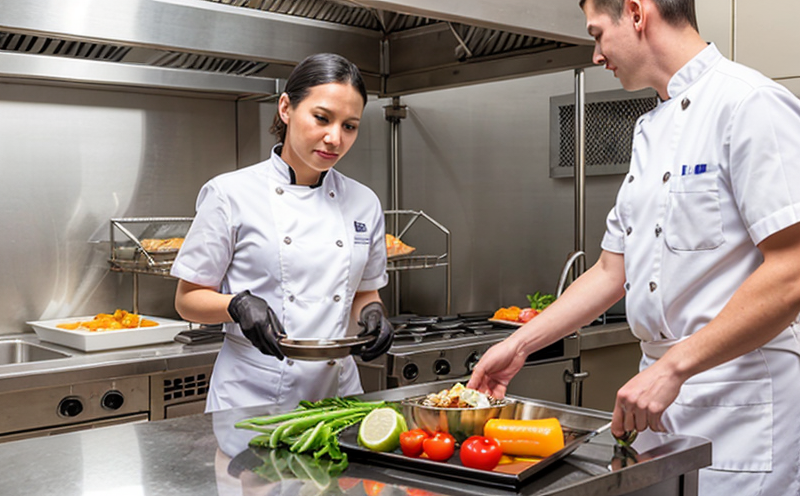Food Safety in Hospitality and Foodservice: A Comprehensive Guide
The hospitality and foodservice industry has always been a crucial part of our daily lives, providing us with meals and beverages that bring people together. However, this industry also carries significant risks to public health due to the potential for foodborne illnesses. Ensuring food safety is a top priority in any food establishment, from restaurants and cafes to hotels and resorts.
Foodborne illnesses can be caused by various factors, including poor handling and storage of food, inadequate cooking procedures, contaminated equipment and utensils, and untrained staff. According to the World Health Organization (WHO), approximately 1 in 10 people fall ill every year due to consuming contaminated food, resulting in significant economic losses and health consequences.
To mitigate these risks, it is essential for hospitality and foodservice establishments to implement robust food safety protocols that cover all aspects of food handling, preparation, and serving. In this article, we will explore the key principles of food safety, highlighting the importance of proper training, equipment maintenance, and sanitation procedures.
Key Principles of Food Safety
Food safety is a multifaceted concept that involves several critical elements:
Temperature Control: This is one of the most crucial aspects of food safety. Temperature control refers to maintaining the correct temperatures for hot and cold foods to prevent bacterial growth. Hot foods should be kept at 60C (140F) or above, while cold foods should be stored at 5C (40F) or below.
Cleanliness: A clean kitchen is a safe kitchen. Regular cleaning and sanitizing of equipment, utensils, and work surfaces are essential to prevent cross-contamination.
Detailed Guide to Food Handling and Preparation
Heres a detailed guide to food handling and preparation in bullet points:
Receiving and Storage
Ensure that all deliveries are properly labeled and stored in designated areas.
Monitor the temperature of refrigerated and frozen items upon delivery.
Regularly inspect food products for signs of spoilage or damage.
Store raw meat, poultry, and seafood away from ready-to-eat foods to prevent cross-contamination.
Preparation and Cooking
Wash hands thoroughly before starting work, and after using the bathroom, smoking, or handling chemicals.
Use clean utensils and equipment for each task to prevent cross-contamination.
Label leftovers with the date they were prepared and store them in designated areas at a safe temperature.
Regularly check food temperatures during preparation and cooking to ensure they meet safe minimum internal temperatures.
Detailed Guide to Sanitation Procedures
Heres a detailed guide to sanitation procedures in bullet points:
Cleaning Equipment
Clean equipment after each use, paying particular attention to areas that come into contact with food.
Use sanitizing solutions and utensils to clean equipment, following the manufacturers instructions.
Regularly inspect equipment for signs of wear and tear, replacing or repairing as necessary.
Sanitizing Work Surfaces
Clean work surfaces after each use, paying particular attention to areas that come into contact with food.
Use sanitizing solutions to clean work surfaces, following the manufacturers instructions.
Regularly inspect work surfaces for signs of wear and tear, replacing or repairing as necessary.
QA Section
Here are some frequently asked questions about food safety in hospitality and foodservice:
What is HACCP (Hazard Analysis Critical Control Points)?
HACCP is a systematic approach to identifying and controlling hazards in the food production process. It involves conducting regular risk assessments, monitoring critical control points, and taking corrective action when necessary.
How often should I clean and sanitize my equipment?
Clean and sanitize your equipment after each use, paying particular attention to areas that come into contact with food. Regularly inspect equipment for signs of wear and tear, replacing or repairing as necessary.
What is the minimum internal temperature required for cooking chicken?
The minimum internal temperature required for cooking chicken is 74C (165F).
How often should I perform a deep clean of my kitchen?
Perform a deep clean of your kitchen at least once a week, paying particular attention to areas that come into contact with food. Regularly inspect equipment and work surfaces for signs of wear and tear, replacing or repairing as necessary.
What is the role of food handlers in ensuring food safety?
Food handlers play a crucial role in ensuring food safety by following proper handling and preparation procedures, maintaining clean and sanitized equipment and work surfaces, and reporting any incidents or hazards to management.
In conclusion, food safety is a critical concern for hospitality and foodservice establishments. By implementing robust protocols that cover all aspects of food handling, preparation, and serving, we can minimize the risk of foodborne illnesses and ensure a safe dining experience for our customers. Regular training, equipment maintenance, and sanitation procedures are essential to maintaining high standards of food safety.

































